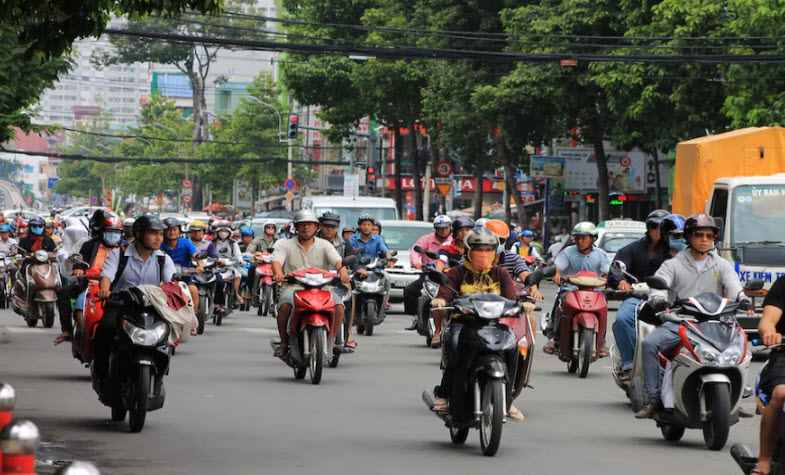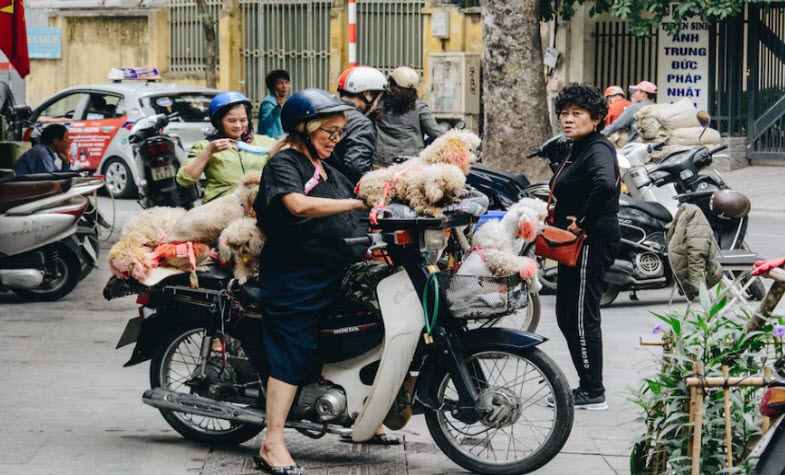The ultimate guide to drive in Vietnam
Welcome to The ultimate guide to drive in Vietnam! This comprehensive guide was put together to help you feel confident and prepared when it comes to navigating the roads of this beautiful country. Whether you’re visiting for a short vacation or planning on moving here permanently, we’ve got all the information you need to know about driving in Vietnam.
In this guide, you’ll find information about the rules and regulations for driving in Vietnam, the different types of vehicles you can hire or rent, tips on how to stay safe while driving around the country, and much more!
Overview of driving in Vietnam
Driving in Vietnam is an experience unlike any other. With its chaotic and unpredictable traffic, navigating the roads of Vietnam can be both daunting and exciting. However, with the right preparation, you can safely navigate your way around this beautiful country.
Getting an International Driving Permit
Driving in Vietnam is a great way to explore the country and experience the culture, scenery and people. Before jumping into the driver's seat, it's important to make sure you're legally able to drive there.
To be eligible for driving in Vietnam, you'll need an International Driving Permit (IDP). An IDP is the only form of documentation that allows you to drive legally in other countries.
In Clause 1 and 2 of Article 3 of Circular No. 29/2015/TT-BGTVT of the Minister of Transport, regulations on the issuance and use of international driving permits have been established. An international driving permit is a license issued by the competent state authority of countries that are signatories to the Vienna Convention, according to a standardized format. The international driving permit is referred to as an IDP, which is the abbreviation for International Driving Permit in English. Participants in traffic must present an International Driving Permit (IDP) issued by countries that are signatories to the Vienna Convention, and at the same time present a national driving license appropriate to the class of vehicle being driven in order to be valid for use on Vietnamese territory.
One thing you must note is that only the International Driving Permit (IDP) issued by countries that are signatories to the Vienna Convention according to a standardized format is valid for use in Vietnamese territory. Other types of international driving permits, including the IAA international driving permit, will not be valid for use in Vietnamese territory.
Once you have your IDP, make sure to carry it with you whenever you're driving in Vietnam. This will help ensure that you're following the laws and regulations of the country.
Related tours for you:
Understanding Vietnamese traffic law and regulations

When driving in Vietnam, it is important to understand the laws and regulations of the country. The main rule that all drivers must follow is to drive on the right side of the road. All vehicles should also travel below or at the posted speed limits and be aware of traffic signs and signals.
The use of seatbelts is mandatory for all passengers in a vehicle and any driver found to be driving under the influence of alcohol or drugs can face serious consequences. Additionally, motorcycle drivers must wear a helmet at all times, even if traveling at low speed.
It is important to have the proper documentation with you when driving, including your passport and driver's license. You must also have valid registration and proof of insurance on the vehicle you are driving. If you are stopped by traffic police, you should have all documents ready for inspection.
In Vietnam, it is illegal to use a mobile phone while driving and any driver found to be doing so can face serious penalties. It is important to keep your eyes on the road at all times and focus on driving safely.
It is important to stay aware of other drivers in Vietnam, as some may not be following the same rules and regulations of the road. Always keep a safe distance between vehicles, use your headlights at night, obey traffic signals, and never pass other vehicles on the right side of the road.
By understanding and following Vietnamese traffic law and regulations, you will be able to drive in Vietnam more safely and confidently.
Renting a vehicle to drive in Vietnam
Before you hit the road, it’s important to consider renting a vehicle for your journey.
There are a variety of rental options available when it comes to driving in Vietnam. Depending on your budget, you can rent a car, motorcycle, or scooter. For the most part, cars are rented in manual transmission but you can sometimes find automatic cars if you look hard enough. When looking for a vehicle to rent in Vietnam, it’s important to do your research and compare prices between vendors. You should also consider what type of vehicle you’ll be comfortable driving and consider the safety features.
Before signing off on a rental, make sure to check the condition of the car. Take a look at the exterior for scratches or dents as well as test out all interior features such as air conditioning, seat adjustments, and heating before committing.
No matter which type of vehicle you choose to rent in Vietnam, make sure that it is compliant with local driving laws and regulations. It’s important to double-check the driver’s license requirements as well as insurance coverage so you don’t get stuck with a hefty fine.
Can I rent a motorbike or car without a legal driver license?

It depends. There are many places where you can rent a car without a driver's license. They only require your personal information and a deposit. In fact, you can freely move on the road because no one will know. However, if you encounter any problems during your journey or happen to be randomly checked, you will understand why it is important to have a valid driver's license according to the law! Therefore, having an International Driving Permit (IDP) is a requirement.
Tips for driving in Vietnam
-
Wearing a Helmet! Protect your life at all costs.
-
Dealing with Traffic! Traffic in Vietnam is organized chaos. First time driving in Vietnam can be daunting but when you get with the flow, you will find that driving in Vietnam is very interesting and not as difficult as you think. And don't panic when you hear loud and continuous honking, just stay calm, observe the surrounding vehicles, and continue driving. Because sometimes Vietnamese people are just in a hurry to go eat "Phở"
-
Avoiding Drunk Driving! Do we have to say more about the consequences of drunk driving?
-
Do not overpack for safety!
-
Fueling Up! Just in case you don't know where is the next gas station, so remember to fuel up gas when you have the chance. You can use Google map for finding the gas station in the area.
-
Dealing with Emergencies and Accidents! First thing first, do not panic! We will all feel worried, afraid, and lose our calmness when something unfortunate happens. But don't worry, Vietnamese people are really friendly and kind. They will be ready to help you if you need it. The language barrier is not a problem if you can prepare some necessary sentences in Vietnamese beforehand.
-
Dealing with Police! Again, keep calm and follow the police's instructions. They all know that you are a foreigner who may not be familiar with driving in Vietnam, so you may only receive a warning or a fine if you violate the traffic regulations. Of course, this is only applicable if you have a valid driving license in accordance with Vietnamese law.
Overall, driving in Vietnam is a great way to experience the country and its many attractions. Before you hit the road, make sure you’ve done your research on road conditions, traffic laws, and vehicle maintenance. With some preparation and care, you can have a safe and enjoyable drive in Vietnam!
Related Southeast Asia tours for you:
***
Travel Authentic Asia Company is your best choice for discovering the beauty of Southeast Asia. Our experienced and knowledgeable travel advisors are committed to helping you create a tailor-made tour and extraordinary experiences in this majestic region.
If you're looking for an authentic cultural experience, do not hesitate to contact Travel Authentic Asia to choose a Vietnam tour, Southeast Asia tour package or to customize your own style tour to South East Asia.

